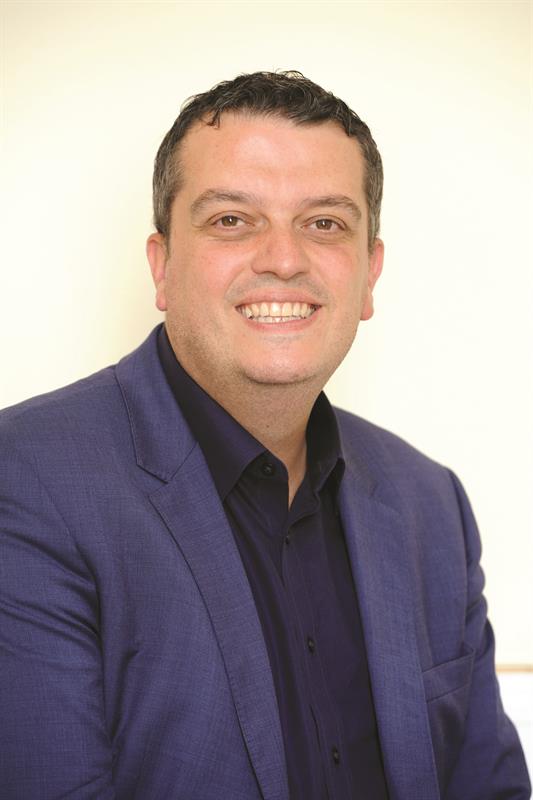
A glaucoma emergency is gripping the UK in the wake of rapidly rising demand since the pandemic, Specsavers said in the 2022 State of the UK’s Eye Health Report, published to coincide with World Sight Day on October 13.
Patients were being failed by the system, the multiple said, with some experiencing irreversible sight loss while on waiting lists. Approximately 633,000 people were waiting for NHS ophthalmology appointments in May 2022, according to Specsavers’ research. More than a third had not been seen within 18 weeks, the maximum waiting time set out in the NHS constitution, while 24,200 people had been waiting longer than a year. Although the pandemic and its restrictions has caused these rates to rise rapidly, the Royal College of Ophthalmologists (RCOphth) compounded the issue with a prediction that demand for glaucoma services would increase by 44% by 2035.
The report was officially launched at an online event by broadcaster, author and journalist, Dr Michael Mosley, who outlined his own experience with having an eye exam.
‘A few years ago, I started getting floaters. I didn’t know what they were and thought the worst,’ said Mosley. ‘My optician assured me it’s age-related, but they would continue to monitor. It was scary but it gave me great peace of mind to know it was not of immediate concern.
‘People can think a trip to the optician is only for people who wear glasses but there are lots of things your optician can do. A lot of eye damage goes undetected. I suspect there are a lot of treatable cases of cataracts and glaucoma that could be picked up early by an optician.’
Raising awareness
Closer working relationships between community optometry and ophthalmology departments to increase public awareness was one of the keys to unlocking better treatment and detection of glaucoma, said Specsavers co-founder Doug Perkins (pictured).
‘Glaucoma is the most preventable cause of blindness in the UK, provided early detection and treatment is in place,’ said Perkins. ‘It is shocking that patients are losing sight from this treatable condition while on waiting lists. Prevention must be a priority for us all and together we need to reach millions of people with important messages about looking after their eyes.’

Specsavers has embarked on a campaign with its partners Glaucoma UK and Visionary to illustrate the importance of eye health and regular eye tests because many people were unaware that glaucoma often has no symptoms. Specsavers estimated that as many as half of all glaucoma cases were going undiagnosed, yet millions chose not to access regular eye tests. Others, such as the homeless and vulnerable, had no access to eye tests, so Specsavers has committed to a long-term partnership with Vision Care for Homeless People, Crisis and The Big Issue to provide eye care to those that cannot access NHS services.
Parliament attention
Marsha De Cordova, MP for Battersea, and Lord Low of Dalston, co-chair of the All Party Parliamentary Group on Eye Health and Visual Impairment, used the report to call for urgent action to tackle the looming glaucoma crisis.
In a joint statement, De Cordova and Lord Low said: ‘Patients, like Michael Bayley, find themselves at the mercy of a broken system. He waited an additional 10 months for glaucoma tests, which he previously had every three months. Sadly, Michael’s vision deteriorated during this time and he is now registered blind as a result.
‘Patients who were assessed as low risk a year ago need to be seen now. We must all work together to design integrated care systems that make use of the entire primary and secondary care workforce to ensure people receive timely treatment.’
The parliamentarians also highlighted the huge economic burden caused by sight loss and blindness. In 2019, the annual figure was an estimated £36bn, but the effects of the pandemic will see this increase by an additional £2.5bn by 2024.
Tackling the emergency
The report said enhanced roles for community optometrists and a consistent approach to care around the four nations would be crucial in dealing with the glaucoma crisis.
Highlighting a recent joint statement from the College of Optometrists and the RCOphth, which set out how primary and secondary care providers could work together to deliver better patient care, RCOphth president Professor Bernie Chang (pictured, below) said local optometrists with specified qualifications could feel empowered to manage patients in the appropriate glaucoma risk categories within their primary care settings.

‘Only by increased working in multidisciplinary teams, with everyone working to the top of their licence and skill set, can we ensure patients with glaucoma are looked after in a timely manner in the right setting. This will reduce the risk of avoidable sight loss and protect our nation’s eye health,’ said Chang in the report.
Professor Anthony King, consultant ophthalmologist and chair of Glaucoma UK, said the pandemic had caused the eye care sector to re-evaluate how it functioned, with accelerated delivery of virtual clinics and prioritisation of high-risk patients using risk stratification tools that laid groundwork for potential closer working in future. ‘It also reviewed care pathways, shifting more care to community-led models, where appropriate while enabling those at lower risk of sight loss to be monitored by qualified community-based healthcare professionals, particularly high street optometrists. These actions undoubtedly helped those patients in the greatest need of care, but many more are still waiting to be seen.’
Highlighting just how useful community optometry could be in helping ease the burden, the multiple revealed that in the past 12 months, it had tested the pressure of 12m and performed more than 3m visual field assessments. Almost 100,000 referrals had been made for glaucoma-related pathology and assessments were given to a further 800,000 patients who were close relatives of someone with glaucoma. In the process, more than seven million optical coherence tomography scans had been captured, along with 13 million retinal photographs.
‘The numbers show just how well-equipped optometry is to play a huge part in the solution to the eye care problems we face now and in the future, and they don’t include the many hundreds of thousands of referrals made overall, from routine cataract referrals to urgent retinal and macula issues,’ said Specsavers’ director of professional advancement, Paul Morris (pictured, below).

He continued: ‘Optometrists are a fundamental part of the eye health network and can do so much more to help. The clinical skills and diagnostic technology are already in place to not only detect but also manage eye disease in the community. Coupled with communication networks, this can be leveraged at scale to provide more capacity for glaucoma care in the community, such as using ophthalmologist connections on a virtual basis. Much of the investment has already been made and there are great examples of scalable infrastructure that would make this a reality.’
Giles Edmonds, clinical services director at Specsavers, underlined the fact that the workforce support was already in place, with thousands of optometrists having developed their knowledge with higher qualifications.
‘Continued exposure to patients in ophthalmology and shared clinics will only improve their skills. Specsavers has always been committed to funding these kinds of development opportunities for our clinicians and our world class continuing professional development programme is open to all,’ he said.
Regional variations
Research in the report also shone a light on the inconsistent funding models that maintained regional differences in the roles optometrists played in glaucoma care. Authors recommended applying a standardised approach to glaucoma patient referrals and using guidelines from the National Institute for Health and Care Excellence (NICE) to help create consistency and lead to efficiency gains in the care pathways.
The enhanced role optometrists could play would also provide much needed help in England, said the report’s authors: ‘A variety of Glaucoma Referral Filtering Services (GRFS), to identify patients who can be managed within a community optometry setting and more complex cases requiring referral to secondary care, have been developed.
‘Scotland, Northern Ireland and Wales have well-established protocols for the use of primary care optometrists in the glaucoma care pathway, supported by coordinated funding. With investment in shared care approaches and training there is potential to expand the role of optometrists everywhere and notably in the glaucoma care pathway in England.’
